
by Scott Bronstad | Jun 12, 2023 | Case Study, Technology
In an era where online connectivity is increasingly becoming a staple in our day-to-day life, the concept of offline programming, specifically offline in-socket programming, can seem somewhat unconventional. However, this proven process holds significant potential to revolutionize industries, bringing numerous advantages that outshine other programming methods. This six-part article series will delve deep into the benefits of offline programming, unearthing how it paves the way for superior quality, unbridled flexibility, simplified troubleshooting, heightened efficiency, remarkable versatility, and maximal assembly line uptime.
In this comprehensive exploration, we will unfold each benefit in dedicated articles, highlighting real-world examples, dissecting relevant principles, and presenting practical insights for implementation. Regardless of whether you’re a seasoned professional seeking fresh insights or a beginner intrigued by the prospect of offline in-socket programming, this series is designed to illuminate this technique’s transformative potential. Join us as we journey through the fascinating landscape of offline programming, uncovering how this innovative approach can unlock unprecedented operational advantages in a myriad of industries.
Part 1 – Elevating Quality: How Offline Programming Mitigates Cost and Ensures Authenticity
In the world of electronic assembly, quality control is a paramount concern. Offline programming offers a revolutionary approach to guarantee the highest standard of quality, promising impeccable individual programming and verification of each chip. This sophisticated technology enables thorough validation and factory device ID checking, effectively verifying the device’s authenticity. The quality assurance this technique offers doesn’t merely serve as a reassuring stamp of approval. It’s a proactive method that not only ensures each chip’s correct functionality prior to installation but also significantly minimizes the Cost of Poor Quality (COPQ). The ripple effect of this high-quality assurance can be felt in various domains, and here is the tale it weaves:
Rework
Consider a scenario where a chip, already nestled in its place on the board, shows signs of malfunction. The consequential rework process is akin to delicate surgery. It necessitates the careful extraction and reprogramming of the chip, followed by its reinstallation. Each of these steps incurs cost, demands time, and requires the expertise of skilled technicians. Moreover, this surgical process brings with it the risk of unintentional damage to adjacent components.
In some unfortunate circumstances, the balance of cost and feasibility may tilt unfavorably, rendering rework unviable. This necessitates a hard choice – consigning the entire board to the scrap pile. Such a decision carries with it the weight of substantial material and labor costs and the regret of wasting perfectly good components sharing the same board.
The narrative deepens as we recognize the potential cascading effect of these challenges. Delays in production birthed by rework and scrap can ripple outwards, leading to missed delivery deadlines, potential financial penalties, and a blow to customer trust.
The final act in this cautionary tale involves poor quality programming rearing its head as product failures in the field. Such incidents can trigger a chain of undesirable outcomes: costly product returns, warranty claims, and perhaps most damagingly, a tarnished company reputation.
In weaving together these scenarios, it’s clear how offline in-socket programming’s quality assurance can dramatically curb the Cost of Poor Quality (COPQ). While there’s a modest rise in upfront costs due to enhanced testing and validation, the long-term fiscal savings, achieved by curtailing rework, scrap, delays, and warranty claims, are significant. In essence, device programming isn’t merely a process; it’s a forward-thinking strategy for superior quality control and cost-effective production.
 Consider an Original Equipment Manufacturer (OEM) for smartphones. They need to ensure the microcontrollers embedded in their devices are programmed correctly to function optimally. By utilizing offline in-socket programming, they are able to test and verify the programming of each microcontroller before it is assembled into a smartphone, thereby reducing the risk of faulty devices and enhancing overall product quality.
Consider an Original Equipment Manufacturer (OEM) for smartphones. They need to ensure the microcontrollers embedded in their devices are programmed correctly to function optimally. By utilizing offline in-socket programming, they are able to test and verify the programming of each microcontroller before it is assembled into a smartphone, thereby reducing the risk of faulty devices and enhancing overall product quality.
As we’ve seen, offline programming’s quality assurance plays a pivotal role in cost minimization and maintaining product authenticity. Yet, this is just one facet of its potential. The next installment in our series will delve into another compelling advantage of offline programming – its inherent flexibility.
In our upcoming discussion, we will explore how this technique accommodates an array of chips and applications, readily adapts to changes, and how it empowers organizations to swiftly respond to evolving market needs. So, stay tuned for Part 2 as we dissect the flexibility of offline in-socket programming and its implications for modern electronic assembly.
Read Part II | Programming and Vertical Manufacturing | BPM API Delivers Quality and Traceability

by Scott Bronstad | May 18, 2023 | Case Study, News, Technology
Device programming has never been more essential in this digital age. These tiny chips are the brains of almost every device we use today, from smartphones to cars, and even to the most advanced medical and industrial equipment. Programming these devices, however, can be a complex and time-consuming process. That’s where BPM Microsystems comes into play, making device programming easier and more efficient than ever before. This article explores how BPM Microsystems outperforms other types of programming and brands in the market.
Device Programming: A Brief Overview
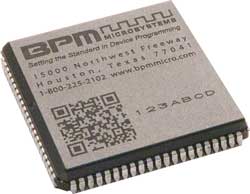 Device programming, at its core, involves loading data into a semiconductor device such as a microcontroller, programmable logic device (PLD), or memory chip. This allows the device to perform its specific functions.
Device programming, at its core, involves loading data into a semiconductor device such as a microcontroller, programmable logic device (PLD), or memory chip. This allows the device to perform its specific functions.
There are various methods of device programming, including in-line, onboard (programming at ICT or Functional Test), and offline programming. Each of these methods has its own set of advantages and disadvantages. In-line programming, for instance, integrates directly into the manufacturing line but might slow down the production process, and is very expensive to scale up. Onboard programming can be faster once it’s set up, but it may not support all types of devices.
Offline programming, while providing flexibility in the programming process, can often be perceived as more complex due to the need for setting up and managing individual programmers. However, with the right solutions like those provided by BPM Microsystems, this process can be simplified, reducing the risk of errors and boosting efficiency.
BPM Microsystems: Simplifying Device Programming
BPM Microsystems has revolutionized the device programming process by introducing innovative, efficient, and easy-to-use solutions that stand out from the competition. Here’s how:
- Broad Device Support: BPM Microsystems’ broad device support makes it easy for businesses to program an extensive range of semiconductor devices. This means less time sourcing different programming solutions for each device type, streamlining the production process, and saving valuable resources.
- Advanced Algorithms: The advanced programming algorithms developed by BPM Microsystems not only ensure high-speed, error-free programming but also simplify the process. By continually updating their algorithms to accommodate the latest devices, BPM Microsystems removes the need for users to constantly adapt to new programming requirements, allowing for a straightforward, hassle-free programming experience.
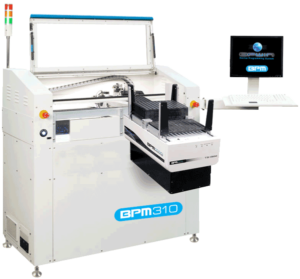 Automated Programming Systems: The automated programming systems offered by BPM Microsystems significantly reduce manual labor; in many cases making it possible to produce several thousand devices per shift, without intensive human intervention. A single machine can often support multiple SMT lines. This not only increases efficiency but also drastically reduces the chance of human error, making the process more reliable and less stressful for operators.
Automated Programming Systems: The automated programming systems offered by BPM Microsystems significantly reduce manual labor; in many cases making it possible to produce several thousand devices per shift, without intensive human intervention. A single machine can often support multiple SMT lines. This not only increases efficiency but also drastically reduces the chance of human error, making the process more reliable and less stressful for operators.- Ease of Use: BPM Microsystems’ user-friendly interface makes device programming easy even for those without extensive technical knowledge. With intuitive controls and clear instructions, users can quickly learn to navigate the system, reducing training time and enabling a faster start to production.
- Automated Z-Height Teach: A standout feature of BPM Microsystems’ solutions is the automated Z-height teach, WhisperTeach™. This greatly streamlines the job set-up process, making it up to 83% faster than traditional human + machine processes. This not only speeds up production with greater uptime but also reduces the possibility of setup errors, ensuring more accurate and efficient programming with a high first-pass yield. BPM was the first company to patent this process and is the only one that provides this game-changing technology on all of its 9th and 10th Generation automated programmers.
- Reliability and Quality: The reliability and high-quality programming of BPM Microsystems’ systems reduce the frequency of errors, making the programming process smoother and easier. Fewer errors mean less time spent troubleshooting and more time dedicated to productive tasks, enhancing overall workflow efficiency.
- Superior Customer Support: With exceptional customer support, BPM Microsystems makes it easy for clients to resolve any issues that may arise during device programming. This means that help is always readily available, reducing downtime and ensuring that the programming process can continue without significant interruptions.
In conclusion, the ease of use provided by BPM Microsystems’ solutions– whether through time savings, improved efficiency, reduced errors, or readily available support– positions them as a leading choice in the device programming industry. Their offerings make device programming not just possible, but straightforward and efficient, allowing businesses to focus on what they do best: creating innovative products powered by expertly programmed devices.
EEEEEEEEEEE AAA SSSSSSSSS YYYYYYY YYYYYY
E:::::::::E A:::A SS:::::::::S Y:::::Y Y:::::Y
E:::::::::E A:::::A S:::::SSSS:::::S Y:::::Y Y:::::YY
EE::::EEEEE A:::::::A S:::::S SSSSS Y::::::Y Y::::::Y
E:::::E A:::::::::A S::::S Y:::::Y Y::::YY
E:::::E A:::::A:::::A S:::::S Y:::::Y Y:::::Y
E:::::EEEEE A:::::A A:::::A S::::SSSS Y:::::Y:::::Y
E:::::::::E A:::::A A:::::A SS::::::SSSSS Y:::::::::Y
E:::::::::E A:::::A A:::::A SSS::::::::SS Y:::::::Y
E:::::EEEEEA:::::AAAAAAAAA:::::A SSSSSS::::S Y:::::Y
E:::::E A:::::::::::::::::::::A S::::S Y:::::Y
E:::::E A::::::AAAAAAAAAAAAA:::::AS S:::::S Y:::::Y
EE::::EEEEE:::::A A:::::ASSSSSSSSS:::::S Y:::::Y
E:::::::::E::::A A:::::AS::::::SSSSSS Y:::::Y
EEEEEEEEEEEAAAA AAAAAAASSSSSSSSSS YYYYYYY
EEEEE AA SSSSS YY YY
EE AAAA SS YY YY
EEEEE AA AA SSSSS YYY
EE AAAAAAAA SS YYY
EEEEE AA AA SSSSS YYY

by Scott Bronstad | May 5, 2023 | How To, Technology
How Automated Programming Aligns with Your Vertical Manufacturing Strategy
Why In-House Device Programming is the Future of Vertical Manufacturing
Learn how in-house programming can improve cost, time to market, and quality. See how an automated programming system can pay for itself compared to outsourcing.
Programmable devices power our modern world, from smartphones to computers to electric cars. But have you ever stopped to think about how these tiny chips are programmed and manufactured? In recent years, there has been a growing trend toward in-house offline device programming as part of the movement toward vertical manufacturing. In this article, we will explore the advantages of this approach, with a focus on cost per device, time to market, and quality.
Device Programming and Vertical Manufacturing
 To understand the benefits of in-house programming and vertical manufacturing, let’s start with a real-world example. Imagine a company that designs and manufactures sensor assemblies for the automotive industry. The company relies on programmable devices to power its assembly, and it needs to program these devices with custom firmware before they can be integrated into the product.
To understand the benefits of in-house programming and vertical manufacturing, let’s start with a real-world example. Imagine a company that designs and manufactures sensor assemblies for the automotive industry. The company relies on programmable devices to power its assembly, and it needs to program these devices with custom firmware before they can be integrated into the product.
In the past, the company outsourced the programming of these devices to a third-party supplier. This meant it had to wait for the supplier to program the devices and ship them back, which added time and cost to the manufacturing process. It also meant that the company had limited control over the quality of the programming and the security of its intellectual property. What’s worse, periodic and sometimes rapid design changes mean the devices in transit have to be reprogrammed, delaying production and ballooning costs.
Now, the company has invested in in-house off-line device programming. This means that it can program the devices themselves “just-in-time” using its own equipment and personnel, before integrating them into the sensor assembly. Let’s take a closer look at the advantages of this approach.
Cost per device
One of the biggest advantages of in-house off-line device programming is cost savings. By bringing the programming process in-house, companies can eliminate the markup third-party suppliers charge for their services. This can translate into significant savings, especially for companies that produce high volumes of devices.
In our example, the company can now program its own devices for a fraction of the cost of outsourcing the process. This has helped to improve its profit margins and make it more competitive in the market.
Time to market
Another critical advantage of in-house programming is faster time to market. By eliminating the need to wait for third-party suppliers, companies can speed up their manufacturing process and get their products to market more quickly. This can be especially important in fast-paced industries where timing is everything.
In our example, the company can now program its devices on demand, without having to wait for a supplier to do it for them. This has helped to reduce its lead times and ensure that it can meet customer demand in a timely manner. Plus, it reduces the likelihood of re-programming when designs change because the parts are programmed within days or hours before integration into the product.
Quality and Security
 Finally, in-house programming can improve the quality of the programming and the security of the intellectual property. When a company outsources its programming to a third-party supplier, it loses some control over the quality of the programming and the security of its intellectual property. In-house programming, on the other hand, allows companies to maintain complete control over the process and ensure that their devices are programmed to the highest standards. And, they maintain complete traceability, controlling the exact quantity of devices programmed.
Finally, in-house programming can improve the quality of the programming and the security of the intellectual property. When a company outsources its programming to a third-party supplier, it loses some control over the quality of the programming and the security of its intellectual property. In-house programming, on the other hand, allows companies to maintain complete control over the process and ensure that their devices are programmed to the highest standards. And, they maintain complete traceability, controlling the exact quantity of devices programmed.
In our example, the company can now ensure that its devices are programmed to their exact specifications without relying on a third-party supplier. This has helped to improve the quality of its products and protect its intellectual property.
A system that pays for itself
 Now, let’s take a closer look at how an offline automated programming system can pay for itself compared to outsourcing the device programming piece. An offline automated programming system can significantly reduce the cost of device programming while improving the quality and speed of the manufacturing process. By eliminating manual programming, an automated system can reduce the likelihood of human error and improve overall efficiency. In addition, the system can be programmed to automatically detect and correct errors, further reducing the likelihood of defects.
Now, let’s take a closer look at how an offline automated programming system can pay for itself compared to outsourcing the device programming piece. An offline automated programming system can significantly reduce the cost of device programming while improving the quality and speed of the manufacturing process. By eliminating manual programming, an automated system can reduce the likelihood of human error and improve overall efficiency. In addition, the system can be programmed to automatically detect and correct errors, further reducing the likelihood of defects.
Furthermore, the advantages of vertically integrating device programming into your factory process extend beyond the cost savings and quality improvements. By having complete control over the programming process, companies can better protect their intellectual property and trade secrets. They can also more easily adapt to changes in customer demand or industry standards since they are not dependent on a third-party supplier.
In conclusion, in-house off-line device programming compliments the trend towards increased vertical manufacturing capability. Especially when paired with an automated programming system, this value-add process can offer significant advantages to companies in terms of cost savings, faster time to market, improved quality, and greater control over the manufacturing process. These benefits can help companies stay competitive in a rapidly changing market and continue to deliver innovative products to their customers while safeguarding their intellectual property.
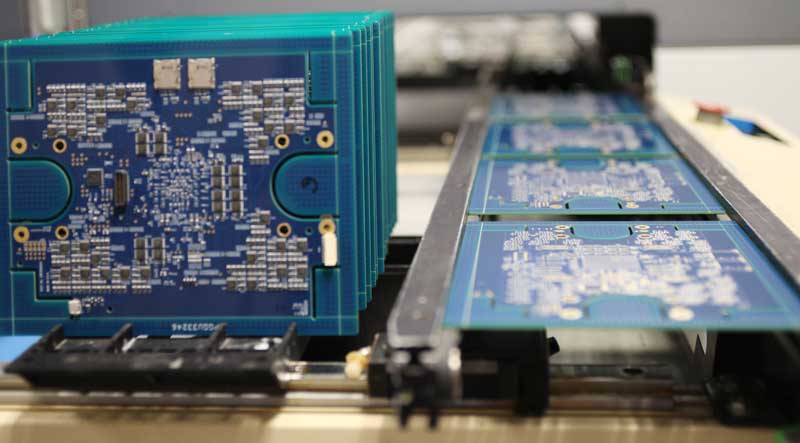
by Scott Bronstad | Feb 28, 2023 | Case Study, Product Comparison, Technology
Semiconductor devices are used in a wide range of electronic applications, from smartphones to industrial machinery. Programming these devices is a crucial step in their manufacturing process, allowing them to perform specific functions. There are several methods to program semiconductor devices, each with its own advantages and disadvantages.
In-System Programming (ISP)
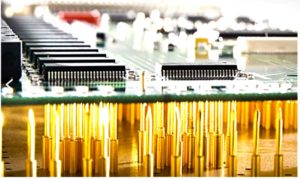
Bed-of-Nails fixture connects the PCB to the final test
In-system programming (ISP) is a method that enables semiconductor devices to be programmed after installation on a circuit board, without requiring removal. This programming method allows for easy updates, and flexibility in the programming process, and avoids device disruption. However, ISP requires dedicated programming hardware or software to interface with the device, which may be slower than other methods. Moreover, when the programming process exceeds a few seconds, it can create bottlenecks, slowing down the production line and making it harder to scale. Learn more here.
In-Circuit Programming (ICP)
In-circuit programming (ICP) is a method that enables semiconductor devices to be programmed while they are in use, without requiring removal. This programming method allows for updates without disrupting device operation, flexibility in the programming process, and avoids device removal. However, ICP requires dedicated programming hardware or software to interface with the device, which may be slower than other methods. Learn more here.
Offline Parallel Programming
Offline programming is a method that enables multiple semiconductor devices to be programmed simultaneously. This programming method is faster than ISP and ICP, allows for a high volume of devices to be programmed at once, and can be easily scaled up. Offline programming requires a dedicated socket adapter with a custom algorithm for each device type. For instance, a socket receptacle can accept similar device types from different manufacturers (for example, a BGA(153), but will require a custom algo for each device to ensure it meets the specs for that device).
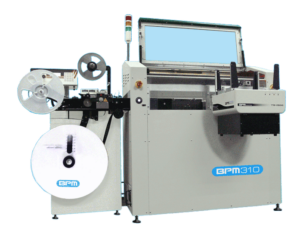 Automated Offline Programming
Automated Offline Programming
Automated programming is a subset of offline programming that uses automated equipment to program semiconductor devices. This programming method is faster than development kits and allows for a high volume of devices to be programmed simultaneously. Moreover, automated programming allows for individual device programming, and is more easily scaled by adding additional resources and shifts.
Development Kits
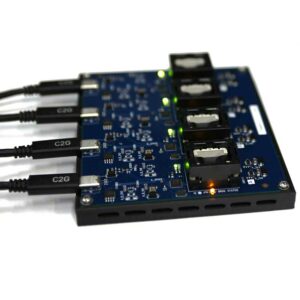 Device programming kits are tools used to program individual semiconductor devices. This programming method allows for individual device programming and prototyping. However, development kits can be slower than other methods and require manual device handling, which can be time-consuming and error-prone. If a prototype goes into full production, other methods should be explored, which will require first article proofing for the production programmer.
Device programming kits are tools used to program individual semiconductor devices. This programming method allows for individual device programming and prototyping. However, development kits can be slower than other methods and require manual device handling, which can be time-consuming and error-prone. If a prototype goes into full production, other methods should be explored, which will require first article proofing for the production programmer.
In conclusion, choosing the right programming method for your programmable devices depends on your specific needs and requirements. Consider the pros and cons of each method before making a decision. Ultimately, selecting the right programming method can save you time and costs while ensuring your devices function properly.
Programming Method
|
Definition
|
Advantages
|
Disadvantages
|
Approx. Usage
|
| In-System Programming (ISP) |
Programming a device after it has been installed on a circuit board, without needing to remove it |
Allows for easy updates in the field, avoids device removal, and provides flexibility in the programming process |
Requires dedicated programming hardware or software to interface with the device, which may be slower than other methods |
40% |
| In-Circuit Programming (ICP) |
Programming a device while it is in use, without needing to remove it |
Allows for updates without disrupting device operation, avoids device removal, and provides flexibility in the programming process |
Requires dedicated programming hardware or software to interface with the device, which may be slower than other methods. |
20% |
| Offline Parallel Programming |
Simultaneously programming multiple devices with the same programming sequence using specialized equipment |
Efficient for large-scale production, automated to increase throughput, and reduces programming errors |
Requires specialized equipment that may be relatively expensive, and less flexible for smaller production runs |
25% |
| Development Kits |
Dedicated hardware and software used to program a single device at a time, typically used for low-volume production or prototyping |
Provides a high degree of control and flexibility over the programming process, can program a wide range of devices, suitable for low-volume production or prototyping |
Requires dedicated hardware and software that is typically inexpensive, and time-consuming for large-scale production or programming of multiple devices with different programming sequences |
15% |
Note: The percentages provided are rough estimates and may vary depending on the specific industry and application.
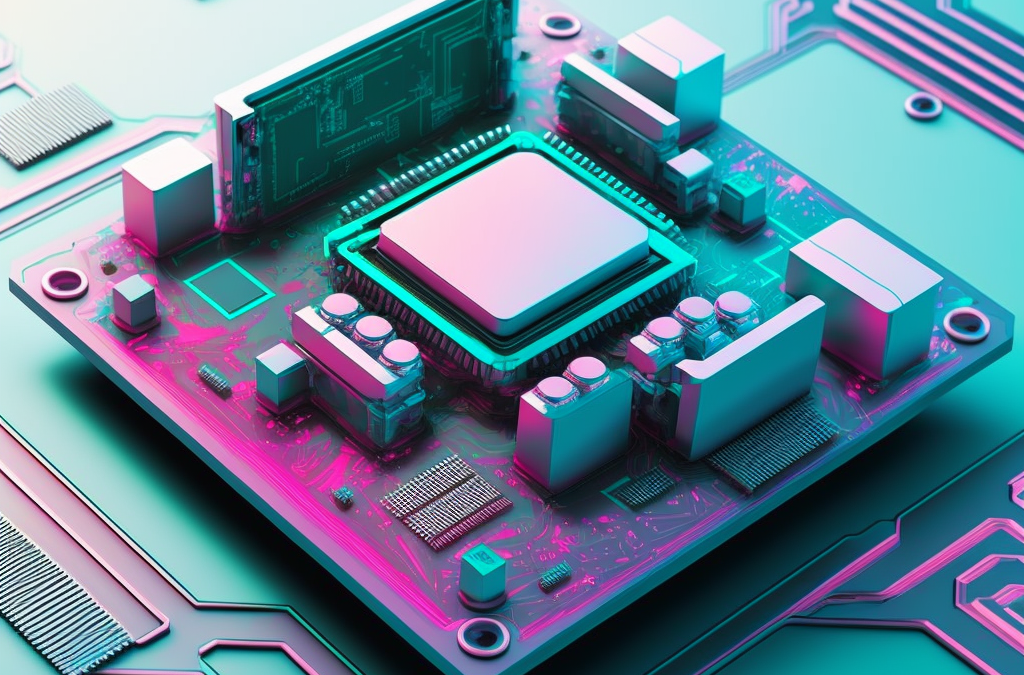
by Scott Bronstad | Feb 22, 2023 | How To, New Device Support, News, Technology
Unlocking Faster Turnaround Times
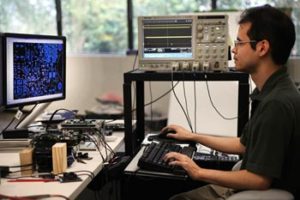 Device Support Engineers are crucial to the development of accurate and reliable programming support for programmable devices. Their role involves researching the device’s architecture, understanding its programming requirements, and developing algorithms to program the device. Here’s a closer look at the key responsibilities and skills required of DS engineers:
Device Support Engineers are crucial to the development of accurate and reliable programming support for programmable devices. Their role involves researching the device’s architecture, understanding its programming requirements, and developing algorithms to program the device. Here’s a closer look at the key responsibilities and skills required of DS engineers:
Responsibilities of DS Engineers
- Research device specifications: DS engineers must research and understand the specifications of the device to determine its programming requirements. They must analyze the device’s architecture and functionality to develop accurate and reliable support.
- Develop algorithms for programming devices: DS engineers use their knowledge of programming languages, scripting, and automation tools to develop algorithms for programming semiconductor devices. They write code optimized for performance and accuracy based on the device’s architecture and functionality.
- Collaborate with other teams: DS engineers work closely with hardware and software engineers to troubleshoot issues and ensure that the device functions correctly. They collaborate to ensure that the device meets performance specifications.
Skills Required of DS Engineers
- Programming proficiency: DS engineers must be proficient in programming languages such as C, C++, Python, etc. They must be familiar with scripting and automation tools to optimize the programming process.
- Analytical and problem-solving skills: DS engineers must have strong analytical and problem-solving skills to identify the root cause of issues that arise during the programming process. They must be able to develop solutions to fix problems (“bugs”) quickly.
- Communication and collaboration skills: DS engineers must have excellent communication and collaboration skills to work effectively with other teams. They must be able to communicate complex technical information effectively and work collaboratively to ensure the device functions correctly.
Investing in DS Engineers
Companies that invest in developing their device support engineers can develop accurate and reliable support faster and more efficiently, leading to a competitive advantage. With new devices and technologies constantly emerging, DS engineers must continuously stay up-to-date with the latest programming languages, tools, and hardware platforms to adapt quickly to new development environments and technologies.
BPM has invested heavily in developing its DS engineer teams, doubling resources over the last 2 years. Becoming proficient in this role can take months of on-the-job training, working with other more experienced engineers. BPM’s investment is working: development times for average complexity projects have dropped from 10 or more weeks to an average of 2 to 4 weeks!
Conclusion
Device support engineers play a critical role in developing accurate and reliable support for programmable devices. They must have a deep understanding of the device’s architecture and functionality, as well as proficiency in programming languages, analytical and problem-solving skills, and communication and collaboration skills. Companies that invest in developing their DS engineers can develop accurate and reliable support faster and more efficiently, leading to a competitive advantage in the market.
Mastering eMMC Device Programming | White Paper: Semiconductor Device programming | Production-Level Support from BPM Microsystems | Apply for BPM Software Engineer

by Scott Bronstad | Jan 26, 2023 | Cybersecurity, How To, Technology
Cybersecurity is a critical concern to secure data for offline device programming, as it ensures the integrity and confidentiality of the programming process. Below are several ways to implement cybersecurity in device programming, with tips on what you should be doing today, including access control, encryption, software updates, risk assessment/management, audits, and education.
Access control
Implementing strict access controls can prevent unauthorized access to the programming equipment and software. This can include physical security measures to secure data, such as security cameras and access cards, as well as software-based security measures, such as password protection and multi-factor authentication.
- Use security cameras to monitor access to the programming equipment and software.
- Use access cards or biometric authentication to control access to the programming equipment and software.
- Implement software-based security measures, such as password protection and multi-factor authentication.
- Regularly review and update access controls to ensure they are still effective.
- If possible, remove outside access to networks and the internet. No access makes it almost impossible to hack.
- Deeper dive here
Secure Data with Encryption
 Encrypting the programming data and communication between the programming equipment and software can secure data against data breaches and unauthorized access to the programming data.
Encrypting the programming data and communication between the programming equipment and software can secure data against data breaches and unauthorized access to the programming data.
- Use strong encryption algorithms to protect the programming data.
- Implement key management to ensure that only authorized personnel have access to the encryption keys.
- Regularly review and update encryption methods to ensure they are still effective.
- 9 best encryption software programs for 2023
Secure software updates
Regularly updating the programming equipment and software is important for keeping them secure. However, it’s important to ensure that these updates are coming from a trusted source and are properly authenticated before installation.
- Ensure that updates are coming from a trusted source and are properly authenticated before installation.
- Keep track of software version and updates history.
- Verify the authenticity of software updates and the update process.
Risk assessment and management
Conducting regular risk assessments and implementing a risk management plan can help identify and mitigate potential vulnerabilities in the programming process.
- Implement a risk management plan to mitigate identified vulnerabilities.
- Evaluate the effectiveness of the risk management plan and update it as needed.
- Deeper dive here
Regular security audits
Regularly auditing the programming process and equipment can help identify and address any security weaknesses. Treat cyber threats as you would an ISO audit.
- Use both automated and manual testing methods.
- Use third-party security experts to conduct regular security audits.
- Keep records of security audits and implement recommendations.
Employee education and awareness
Educating employees about the importance of cybersecurity and how to properly handle and protect programming equipment and data can help prevent human error-based security breaches.
- Provide regular cybersecurity training to employees.
- Create and implement security guidelines and policies.
- Encourage employees to report any suspicious activities or security breaches.
- Run regular cybersecurity drills and simulations.
Implementing these security measures can help ensure the integrity and confidentiality of the offline semiconductor device programming process and protect against potential cyber threats. While this article focuses on offline programming, many of these principles apply to other types of device programming as well. In short, it’s important to regularly review and update these security measures to ensure they stay effective in protecting against evolving cyber threats.
Learn More

Consider an Original Equipment Manufacturer (OEM) for smartphones. They need to ensure the microcontrollers embedded in their devices are programmed correctly to function optimally. By utilizing offline in-socket programming, they are able to test and verify the programming of each microcontroller before it is assembled into a smartphone, thereby reducing the risk of faulty devices and enhancing overall product quality.

 Device programming, at its core, involves
Device programming, at its core, involves  Automated Programming Systems: The
Automated Programming Systems: The 
 Now, let’s take a closer look at how an offline automated programming system can pay for itself compared to outsourcing the device programming piece. An offline automated programming system can significantly reduce the cost of device programming while improving the quality and speed of the manufacturing process. By eliminating manual programming, an automated system can reduce the likelihood of human error and improve overall efficiency. In addition, the system can be programmed to automatically detect and correct errors, further reducing the likelihood of defects.
Now, let’s take a closer look at how an offline automated programming system can pay for itself compared to outsourcing the device programming piece. An offline automated programming system can significantly reduce the cost of device programming while improving the quality and speed of the manufacturing process. By eliminating manual programming, an automated system can reduce the likelihood of human error and improve overall efficiency. In addition, the system can be programmed to automatically detect and correct errors, further reducing the likelihood of defects.

 Automated Offline Programming
Automated Offline Programming Device programming kits are tools used to program individual semiconductor devices. This programming method allows for individual device programming and prototyping. However, development kits can be slower than other methods and require manual device handling, which can be time-consuming and error-prone. If a prototype goes into full production, other methods should be explored, which will require first article proofing for the production programmer.
Device programming kits are tools used to program individual semiconductor devices. This programming method allows for individual device programming and prototyping. However, development kits can be slower than other methods and require manual device handling, which can be time-consuming and error-prone. If a prototype goes into full production, other methods should be explored, which will require first article proofing for the production programmer. Device Support Engineers are crucial to the development of accurate and reliable programming support for programmable devices. Their role involves researching the device’s architecture, understanding its programming requirements, and developing algorithms to program the device. Here’s a closer look at the key responsibilities and skills required of DS engineers:
Device Support Engineers are crucial to the development of accurate and reliable programming support for programmable devices. Their role involves researching the device’s architecture, understanding its programming requirements, and developing algorithms to program the device. Here’s a closer look at the key responsibilities and skills required of DS engineers: